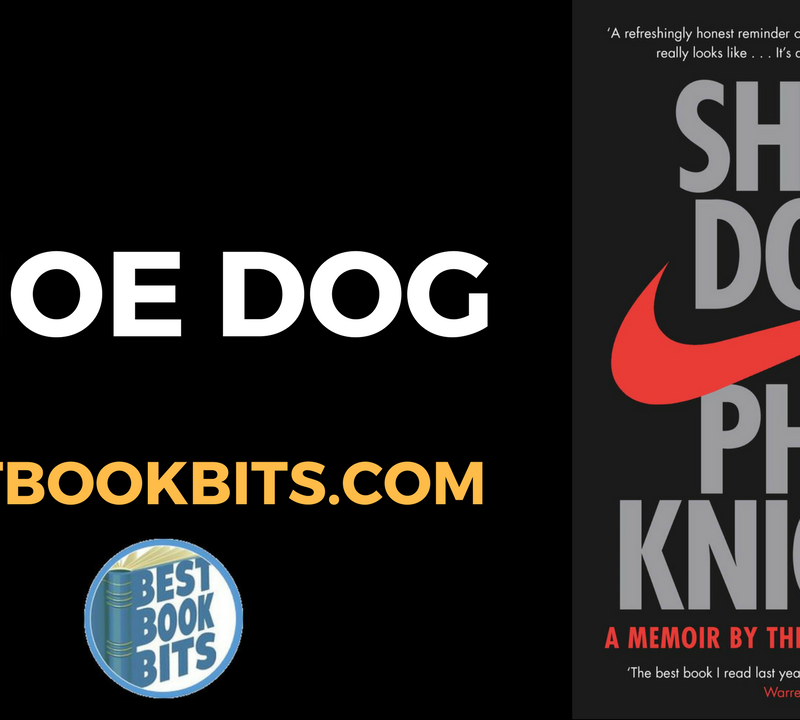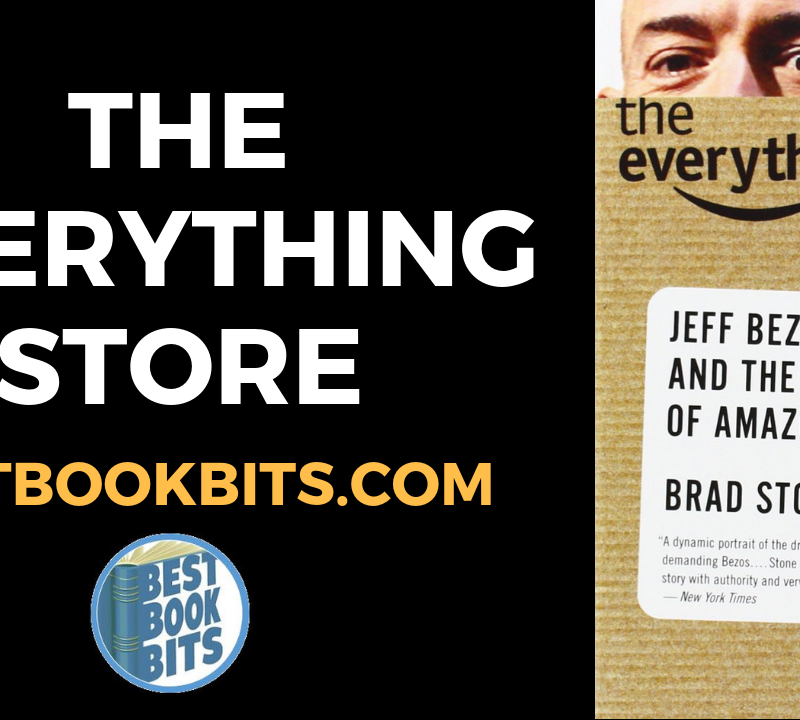< DOWNLOAD THIS SUMMARY IN PDF HERE >
< FOLLOW US HERE > |YouTube |Spotify | Instagram | Facebook | Newsletter | Website
Invention: A Life by James Dyson
Dyson has become a byword for high performing products, technology, design and invention. Now, James Dyson, the inventor and entrepreneur who made it all happen, tells his remarkable and inspirational story in Invention: A Life.
Famously, over a four-year period, James Dyson made 5127 prototypes of the cyclonic vacuum cleaner that would transform the way houses are cleaned around the world. In devoting all his resources to iteratively developing the technology, he risked it all, but out of many failures and setbacks came hard-fought success. His products – including vacuum cleaners, hair dryers and hair stylers, and fans and purifiers – are not only revolutionary technologies, but design classics. This was a legacy of his time studying at the Royal College of Art in the 1960s, when he was inspired by some of the most famous artists, designers and inventors of the era, as well as his engineering heroes such as Frank Whittle and Alec Issigonis.
In Invention: A Life, Dyson reveals how he came to set up his own company and led it to become one of the most inventive technology companies in the world. It is a compelling and dramatic tale, with many obstacles overcome. Dyson has always looked to the future, even setting up his own university to help provide the next generation of engineers and designers. For, as he says, ‘everything changes all the time, so experience is of little use’.
“It is a story told through a life of creating and developing things, as well as expressing a call to arms for young people to become engineers, creating solutions to our current and future problems.”
“Remember that there is nothing wrong with being persistently dissatisfied or even afraid. We should follow our interests and instincts, mistrusting experts, knowing that life is one long journey of learning, often from mistakes. We must keep on running and we really can do better!”
The story of British inventor, industrial designer, and entrepreneur James Dyson is very inspiring and illuminating. He takes the reader on a journey of his childhood, lessons learned from his parents, losing his parents at adolescence, becoming self-reliant early in life, getting fired from his first company, losing the license to the ball barrow and the patent. His five years legal battles with Amway, dealing with the British government and moving the Dyson Headquarters to Singapore.
Dyson’s Father Died at 40 of Cancer when he was 9
He also shared great insights he learned from his friend and mentor Jeremy Fry. His favorite inventors and heroes who inspired his thought-process such as Alec Issigonis, Soichiro Honda, André Citroën, Frank Whittle (Jet Engine), Isambard Kingdom Brunel, among others. Dyson also speaks glowingly about his ever-supportive wife and partner Deirdre Hindmarsh.
The book is a journey of an entrepreneur, the ups and downs, the value of having a supportive partner or spouse (Deidre), the importance of having a mentor (Jeremy Fry) that always pushes you to succeed, a dedicated financial institution or bank manager that is ready to take the plunge with you. His story shows how far determination, willpower, dedication, persistence, and perseverance can take someone with a commitment to succeed.
Dyson made 5,127 prototypes of his Cyclonic and Bagless Vacuum Cleaner before he got to a model he could set about licensing.
5,127 hand-made prototypes – One-Track Mindedness
“In 1983, after four years of building and testing 5,127 hand-made prototypes of my cyclonic vacuum, I finally cracked it. Perhaps I should have punched the air, whooped loudly, and run down the road from my workshop shrieking ‘Eureka!’ at the top of my voice. Instead, far from feeling elated, which surely after 5,126 failures I should have been, I felt strangely deflated.
How could this have been? The answer lies in failure. Day after day, with the wolf at the door, I had been pursuing the development of an ever more efficient cyclone for collecting and separating dust from a flow of air. I built several cyclones each day, conducting tests on each one to evaluate its effectiveness in collecting dust as fine as 0.5 microns − the width of a human hair is between 50 and 100 microns − while using as little energy as possible.”
“This might sound boring and tedious to the outsider. I get that. But when you have set yourself an objective that, if reached, might pioneer a better solution to existing technologies and products, you become engaged, hooked and even one-track-minded.”
< DOWNLOAD THIS SUMMARY IN PDF HERE >
< FOLLOW US HERE > |YouTube |Spotify | Instagram | Facebook | Newsletter | Website
On Failure
“Learning by failure is a remarkably good way of gaining knowledge. Failure is to be welcomed rather than avoided. It is a part of learning. It should not be feared by the engineer or scientist or indeed by anyone else.”
Folklore depicts invention as a flash of brilliance. That eureka moment! But it rarely is, I’m afraid. It is more about failure than ultimate success. I even thought of calling this book James Dyson: Failure, but was talked out of it because it might give the wrong impression. People want to read about success. Funnily enough, engineers who are good at inventing things are never satisfied with their latest creation. They tend to look at it quizzically and say, ‘I now know how to make it better’, which is a wonderful opportunity! This is the start of their reinvention, marking another leap in performance.
“Research is about conducting experiments, accepting and even enjoying failures, but going on and on, following a theory garnered from observing the science. Invention is often more about endurance and patient observation than brainwaves.”
We certainly have taken big risks, with the digital electric motor, the washing machine, the electric car and our research into solid-state batteries. Not all have been commercially successful. That is the point. By its very nature, pioneering will not always be successful, otherwise it would be all too easy. We don’t start these ventures with the inevitability of success − we are all too aware that we may well fail.
On Curiosity
My tale is one of not being brilliant. I wasn’t even trained as an engineer or scientist. I did, however, have the bloody-mindedness not to follow convention, to challenge experts and to ignore Doubting Thomases. I am also someone who is prepared to slog through prototype after prototype searching for the breakthrough. If a slow starter like me could succeed, surely this might encourage others.
Curiosity – Experience is not the best teacher, it is the ability to maintain that curiosity that matters
I was naïve and eager to learn all that as I progressed. It was a steep learning curve, though, and still is. Everything changes all the time, so experience is of little use. I didn’t know that at the time and assumed that it would become easier with experience. It must be encouraging for those just graduating to know that is not the case. Fifty-two years later I can assure my graduates that I am no better for my experience.
“At Dyson, we don’t particularly value experience. Experience tells you what you ought to do and what you’d do best to avoid. It tells you how things should be done when we are much more interested in how things shouldn’t be done. If you want to pioneer and invent new technology you need to step into the unknown and, in that realm, experience can be a hindrance.”
Role of Supportive Partner and Network
The failures began to excite me. ‘Wait a minute, that should have worked, now why didn’t it?’ I was scratching my head, mystified, but then had another idea for an experiment that might lead to solving the problem. I was usually covered in dust, getting deeper and deeper into debt, yet happy and absorbed. Fortunately, my wife, Deirdre, allowed me to put our house and home life at risk, while the bank was kind enough to lend us money.
She and our children never expressed doubt about what I was doing every day. They offered encouragement, love and understanding. Without that I would have given up. The same is true of every one of our friends. They must have thought I was mad and wasting my time, leading my family into penury. They never said so. Instead, they supported us and gave the unstinting encouragement without which I also doubt I could have lasted the course. They are true and close friends.”
Long-Distance Running – Crossing the Pain Barrier
The first thing I knew I was good at, and something that I had taught myself as a teenage schoolboy, was long-distance running. Once through the pain barrier, I found I had the determination, or sheer bloody mindedness, to keep on running. Running, early in the morning or late at night, through that hauntingly beautiful landscape proved to be more than a ritual challenge. It was an escape from school, allowing me to think that anything and everything was possible.
Cross-Training
- It was playing games, however, that taught me the need to train hard and to understand teamwork and tactics. The planning of surprise tactics, and the ability to adapt to circumstance, are vital life lessons. These virtues are unlikely to be learned from academic life and certainly not from learning by rote
- Acting in plays, which I very much enjoyed, taught me about character, learning to express thoughts and to emphasise dramatically in speech.
- Long-distance running allowed me the freedom to roam the wilds of Norfolk while depending on no one but myself. Running also taught me to overcome the pain barrier: when everyone else feels exhausted, that is the opportunity to accelerate, whatever the pain, and win the race. Stamina and determination along with creativity are needed in overcoming seemingly impossible difficulties in research and other challenges in life.
Losing his father and Self-Reliance
“I felt the devastating loss of my dad, his love, his humour and the things he taught me. I feared for a future without him. Having recently become a boarder at the school, away from my family, I was suddenly alone. It didn’t do to cry or show emotion, just a stiff upper lip. Ever since, a part of me has been making up for that painfully unjust separation from my father and for the years he lost. Perhaps I had to learn quickly to make decisions for myself, to be self-reliant and be willing to take risks. Little could be worse than my father dying when he did.”
On Creativity
“It makes me sad and concerned that schools are failing to teach creativity. Yet life today demands it more and more. We need to create fresh solutions to seemingly intractable problems, to devise new software, to create something different in order to compete in the global economy. These abilities are a prerequisite today. No longer can we lead life by repeating what we have learned and what has worked in the past. The world, thankfully, is becoming better educated, and competition has never been so fierce. The advantage we in the West have relied upon for so long is being diminished. In order to stay ahead we need to focus increasingly on our creativity.”
Dreaming at RCA
I loved my time at the RCA not least because of its lively and inventive cross-disciplinary approach. Here, as I progressed, I realized that art and science, inventing and making, thinking and doing could be one and the same thing. I dared to dream that I could be engineer, designer and manufacturer at one and the same time.
‘When you design something, everything about it has to have a purpose. There has to be a reason.’
Invention, a life is a great book about invention, risk-taking, entrepreneurial initiative, guts, perseverance, resilience, and a never-give-up attitude. James Dyson’s story is very fascinating, thought-provoking with lots of ups and downs, false turns, and many failures.
“You never change things by fighting the existing reality. To change something, build a new model that makes the existing model obsolete.” – Buckminster Fuller
< DOWNLOAD THIS SUMMARY IN PDF HERE >
< FOLLOW US HERE > |YouTube |Spotify | Instagram | Facebook | Newsletter | Website
Environment and Entrepreneurship
In some ways, precious little has changed. When people ask why companies, including Dyson, manufacture outside Britain, the answer might be complex and yet it boils down to the fact that there are places and countries around the world, from Germany to Singapore, where manufacturing is encouraged and not least because it is seen as both worthwhile and exciting.
There were to be several good reasons why, years later, I was to move Dyson manufacturing to Malaysia and, ultimately, its headquarters to Singapore, yet the sheer enthusiasm for making things there, expressed by both governments and entrepreneurs, is a wonderful antidote to the British way of looking down on the world of factories and production.
The Importance of Sales
Inventions, though, no matter how ingenious and exciting, are of little use unless they can be translated through engineering and design into products that stimulate or meet a need and can sell. It might be fun to look at books illustrated with fascinating if all too often enigmatic, impractical and rather mad inventions and designs that never happened, yet even the most worthwhile and world-changing inventions, from ballpoint pens to the Harrier Jump Jet, need to be a part of the processes of making and selling to succeed.
“Britain has been a nation of plunderers and raiders, pirates, buccaneers and chancers for several hundred years. We have a history of the fast buck celebrated in poetry, song, films and romantic histories, whereas the story of what has long been portrayed as the slow, difficult and dirty business of making things is held up to ridicule and shamed even today.”
Continuous Innovation as a key to success
There is a lesson here. Rather like the way some sharks have to keep moving to stay alive, innovative engineering-led manufacturers need continuous innovation to stay competitive. Striving for new and better products is often what defines such companies. At Dyson, we never standstill. In a quarter of a century, we have gone from making a revolutionary vacuum cleaner to prototypes of a radical electric car. Invention tends to compound invention and companies need to be set up for this. They can have a DS moment − a prolonged one in the case of the car that in Roland Barthes’ words ‘had fallen from the sky’ − and still fail.
Lessons Learned from his friend and Mentor – Jeremy Fry
Jeremy Fry, however, taught me that if you have a good idea for a new product, you engineer, prototype, manufacture, market and sell it. This makes you an entrepreneur. Jeremy showed me that, far from being pirates, entrepreneurs could be creators and makers of better products, however odd or outré.
Don’t copy the opposition. Don’t worry about market research. Both Jeremy and Alec Issigonis might just as well have said ‘Follow your own star.’ And this is indeed what successful entrepreneurs do. The problem, though, was that I wasn’t following my own star, and this proved to be the very reason why my first company, Kirk-Dyson, was not the success it could have been.
Chris Wilkinson, who, before setting up his own practice in 1983 and had, like Tony, worked for Foster, Rogers and Hopkins, impressed me. Instead of telling me what he thought I needed, he asked lots of questions that helped me think what we really needed and wanted, and drew sketches for me in response to my answers. This, of course, is exactly what Jeremy Fry had taught me to do when selling the Sea Truck. Ask your client what they think they want and then suggest solutions.
Beware of Experts
Experts tend to be confident that they have all the answers and, because of this trait, they can kill new ideas. But when you are trying to break new ground, you have no interest in getting stuck in engineering conventions or intellectual mud.
Science is a very human form of knowledge. We are always at the brink of the known, we always feel forward for what is to be hoped. Every judgement in science stands on the edge of error and is personal. Science is a tribute to what we can know although we are fallible. – Jacob Bronowski
On Innovation
Plagiarism is lazy, while avoiding the costs of developing and introducing new technology. Patents exist to allow the inventor to commercialise an invention without being copied for twenty years from the date of filing the patent, which in practice means ten to fifteen years of production. If the inventor didn’t have that opportunity to make a return on his efforts, why would anyone invest in researching new and better ways of doing things?
All the Best in your quest to get Better. Don’t Settle: Live with Passion.
< DOWNLOAD THIS SUMMARY IN PDF HERE >
< FOLLOW US HERE > |YouTube |Spotify | Instagram | Facebook | Newsletter | Website














